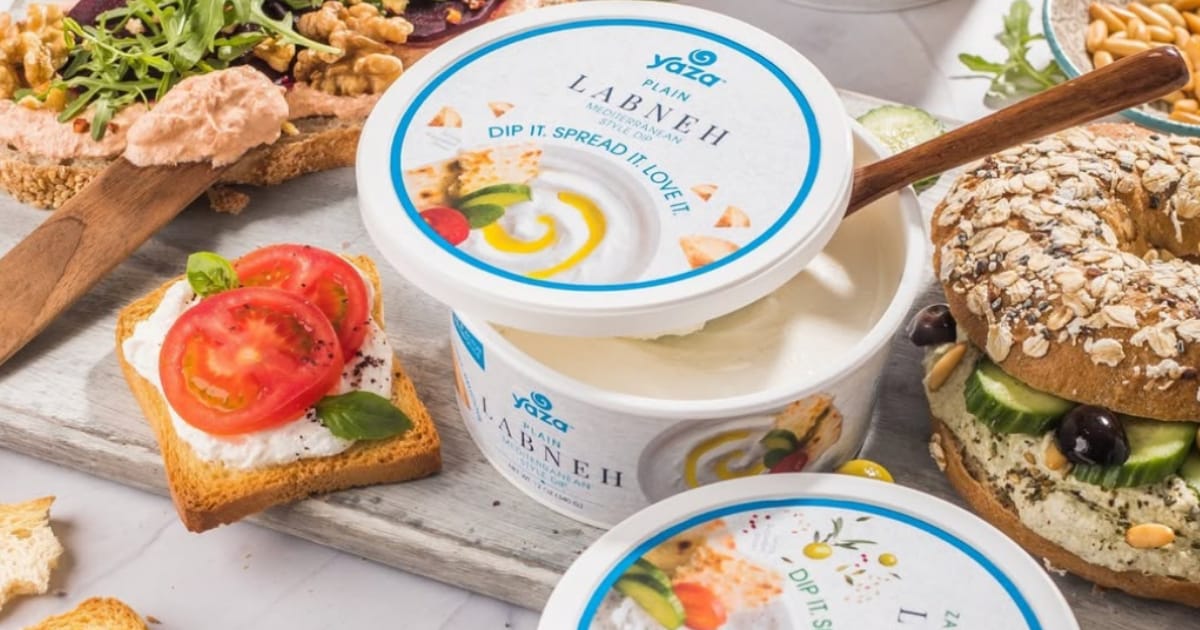Sometimes the biggest challenge isn’t taste — it’s translation. Consumers might love your product, but if they don’t know what to do with it, they won’t buy.
Karim Khalil grew up eating labneh, a creamy, tangy staple served at every Lebanese meal.
When he moved to the U.S., he couldn’t find labneh that matched the taste of home. So he made it. First for himself. Then for friends. Now, through Yaza Foods, for retailers like Whole Foods and Costco.
Don’t assume U.S. consumers will “get it.” Before launching, Karim ran dozens of taste tests. He gave people labneh, pita, veggies, utensils — with no instructions. “How are people going to use it? A dip? A spread?” he says. “Everyone liked it. But no one knew what to do with it.” That insight led to introducing flavored labneh (including their best-seller za’atar with olive oil), making it easier for consumers to understand.
If co-packers say no, keep calling. Karim reached out to more than 1,000 co-packers. Most of them had high minimums, no interest in startups, and had never heard of labneh. “We were ready to give up,” he says. “Then one called back. A client had just left, and they were open to trying it out for us.”
Traditional recipes might not pass FDA regulations. In Lebanon, labneh is strained in cheesecloth and hung from a tree. Not an option in the U.S. Instead of compromising with powders or thickeners, Karim partnered with a food scientist to rebuild the recipe using the authentic recipe of pasteurized cultured milk and salt.
Trade shows are won before they begin. Karim doesn’t rely on foot traffic at trade shows. “The work starts the day you register,” he says. Book 3-5 meetings in advance, study each store’s product selection, and go in with a plan. Don’t just ask, ‘Do you like my product?’ Show them how your product can improve their selection and give consumers more options.
Placement matters as much as the product. Labneh could’ve gone next to the yogurt, in the cheese case, or even the deli — all technically accurate, but wrong for the shopper. “If you put it by yogurt, it confuses people. They see it as a dip,” he says. “Our consumer is the hummus consumer, the tzatziki consumer. Wherever hummus lives, we want Yaza to live.”
Market signal → International flavors are booming in U.S. retail, but success isn’t just importing a product. It’s translating tradition into everyday American shopping behavior.

Labneh, everywhere, all at once
Find the familiar in the foreign
If consumers don’t understand your product in three seconds, they’ll move on. Your job is to make it instantly clear what it is, why it matters, and how it fits into their life.
What product are you replacing in their pantry?
What need does it meet: taste, health, convenience, culture?
Can you describe it without using regional or niche terms?
Does it fit a certain lifestyle or preference (e.g. high protein, gut health, global snacking)?
Is it tied to a trend you can ride (e.g. international flavors, better-for-you swaps)?
Product clarity checklist
Use this to stress-test whether shoppers will pick it up without you standing next to the shelf.
Can you explain the product in one clear sentence?
Have you tested with people outside your core audience?
Do consumers understand how and when to use your product?
Does your packaging clearly show how your product should be consumed
Does your shelf placement make sense to shoppers?